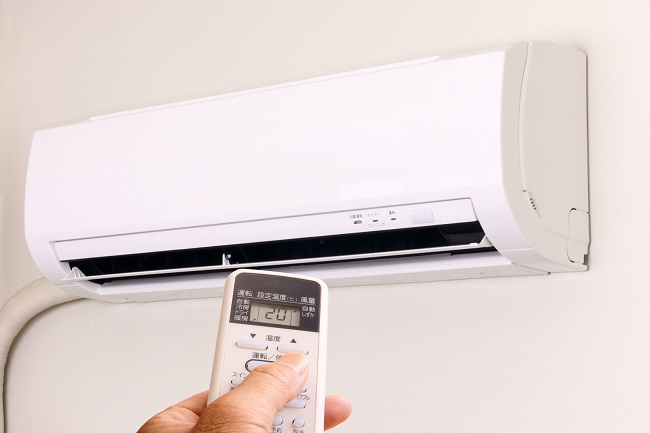As the world evolves and technology advances, it’s no surprise that many industries are making significant improvements. One such sector is the heating and cooling industry. Fresh innovations and advancements are on the rise, making traditional heating and cooling systems obsolete. These new technologies are promising efficient energy use and reduced environmental strain—promising a greener future for all.
The transition from traditional heating systems to more advanced technologies comes from a need to address persistent issues. Many households and businesses grapple with high energy costs, finding it hard to control their energy usage. The current systems also put much pressure on our environment, contributing to carbon emissions and climate change. Thus, these ongoing innovations aim to balance out these major pain points.
The Evolution of Heating and Cooling Systems
Traditional heating and cooling systems have been around for decades, with the emergence of central heating systems and air conditioners being a turning point in the industry. These systems served the purpose, providing comfort in varying weather conditions. But as time passed, the fallacies of these systems started emerging. High energy consumption, exponential costs, and environmental degradation being the major ones.
The runtime inefficiency of these systems caused homes to consume enormous amounts of energy, usually running on fossil fuels. This would lead to lots of wasted energy for homes that only needed localized heating or cooling, or those that were unoccupied at a particular time. Then there was the question of climate change. These systems produce carbon dioxide, contributing to greenhouse gases and rising global temperatures. That’s why today, there’s a need for heating and cooling systems that are not just energy-efficient and cost-effective, but also environmentally conscious.
Green Heating and Cooling Systems: A Breather for the Environment
The rising demand for sustainable solutions has triggered the development of eco-friendly heating and cooling systems. These technologies offer a win-win solution—significantly reducing energy consumption while minimizing environmental impact. Plus, they also bring down the cost of heating and cooling for households and businesses.
For instance, green technologies like geothermal heat pumps use the constant temperature of the earth as an exchange medium to heat or cool the house. Air source heat pumps, on the other hand, transfer heat between outside and inside a building. These technologies are not only energy efficient but also cost-effective in the long run. With such an array of benefits, the shift towards eco-friendly systems is an inevitable, yet timely step forward.
Smart Thermostats: The True Game-Changer
Amidst these groundbreaking innovations, smart thermostats indeed steal the show. They integrate with Wi-Fi, allow temperature scheduling, and adapt to your routine over time. These devices provide homeowners with convenient control over their home’s heating and cooling, leading to increased efficiency.
One of the leading brands in this space is Nest, featuring learning thermostats that “learn” the schedule and preferences of homeowners. Another brand, Ecobee, offers comfort settings and energy-saving features, allowing users to customize temperature on a room-by-room basis. These smart thermostats not only increase comfort, but they also save energy and reduce environmental impact.
Zoning Systems: Heating and Cooling Done Right
Another fascinating development in the industry is the advent of zoning systems. These provide personalized comfort for different areas in your home, enabling you to control the temperature in different spaces independently.
Zoning systems significantly reduce wasted energy by limiting heating or cooling to the areas of your home that need it the most. Brands like Trane and Honeywell are leading this revolution, offering zoning systems that assure the optimal temperature for every room and increase overall comfort.
Making the Switch: Considerations and Challenges
Deciding to upgrade to these advanced heating and cooling systems requires careful considerations. Factors such as cost, installation process, energy efficiency, and environmental impact need to be evaluated. While initial costs may be high, most of these systems save money in the long run due to their energy-efficient designs.

Harnessing Solar Power: Heating and Cooling of the Future
Solar power is fast becoming one of the cleanest energy sources available, and it is expected to play a significant role in future heating and cooling systems. Solar power can be harnessed through solar panels to heat or cool our homes. The technology is not only sustainable but also cost-effective over time.
However, there are some challenges like the initial installation cost and the need for sunny weather for optimal functionality. Notwithstanding, the advantages of this clean energy source outweigh the few hurdles, making it a crucial part of the future of heating and cooling systems.
The Future Outlook: What’s Next in Heating and Cooling Systems?
As technology advances, so does the realm of heating and cooling systems. Innovations like Artificial Intelligence and machine learning are likely to impact future trends in this sector. These technologies can learn and adapt to our behaviors and habits, making heating and cooling more personalized and efficient.
Conclusion
The urgent need for improved heating and cooling systems cannot be overemphasized. The innovations we’ve discussed in this article present a promising avenue not just for energy savings but also for a greener and more sustainable future. With this in mind, it’s worth considering these innovations for your next heating or cooling system upgrade.








